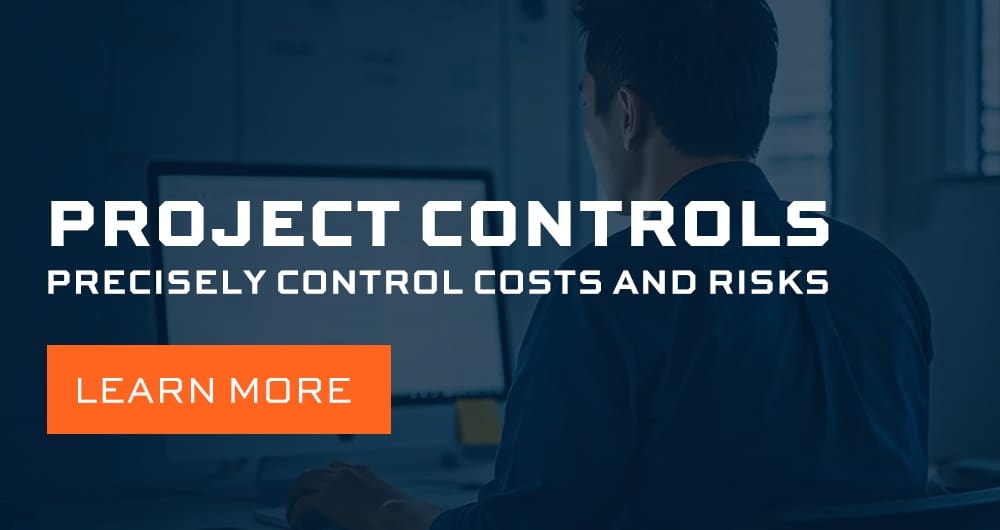It’s fairly well understood that gathering and monitoring construction project data throughout the build helps prevent going over budget and falling behind schedule. What may not be as well understood is how to most effectively do this.
As a method to measure project performance, earned value management (EVM) specifically addresses construction progress in terms of how the spend and timeline work together, rather than treating them as siloed values. It answers “Where are we now and is it where we should be?” and “Where are we headed based on our present path?”
But EVM’s value goes far beyond that. More than being a mere barometer of cost and schedule progress, earned value management — particularly when its data is captured, organized and processed through data analytics software — enables you to leverage insights into how to solve the challenges common among construction projects.
EVM as a planning tool
Keeping things from inching beyond set timeline milestones and budget thresholds takes skill — and data. Assuming source data from your estimate provides an accurate baseline against which to gauge progress, EVM gives you real-time visibility into your project’s performance.
So, you can know that everything is humming along within the operating ranges you set at the project’s start. Or conversely, you can spot and analyze gradually developing trends or sudden deviations in any of the data of your earned value management calculations. Knowing what these metrics are at any given moment — and what the specific values unique to each calculation mean — ensures you can identify when you need to keep an eye on a trending shift or take more urgent corrective action.
- When you’re looking at schedule and cost variances (SV and CV), positive values mean a project is ahead of schedule or below budget, negative values mean behind schedule or over budget, and “0” means on schedule or on budget.
- When tracking schedule and cost performance (SPI, CPI), values greater than 1 are ahead of schedule or below budget, less than 1 is behind schedule or over budget, and “0” is on schedule or on budget.
- Operating ranges for your SPI and CPI are those natural high-low swings within parameters you establish at the beginning of your project. They’re what is deemed acceptable to you based on the particulars of your project. For example, you may have a smaller range for projects or tasks that are completed in controlled environments because fewer outdoor factors can impact it; whereas those performed in more harsh, uncontrollable conditions would have a wider operating range to account for the impact of, say, severe weather.
In essence, your data gives you actionable insights. What you gain from these insights into your project metrics is certainty — regardless of whether the numbers are reassuring or cause for concern. Granted, very little is ever truly 100% certain in construction. But EVM could be as close as you get to a crystal ball. With the level of accuracy EVM affords in the degree and direction of your project’s performance, it allows you to better plan as circumstances evolve.
EVM as a risk-management tool
Nobody likes surprises during a massive construction project. So perhaps the most important aspect of earned value management is its ability to serve as an alert system, essentially waving red flags when the metrics indicate something is amiss or heading in that direction. What this alert does is enable you to identify anything impacting your ability to complete the project according to your contractual requirements. There will always be surprises that occur during a project’s life cycle but using EVM can at least remove project performance metrics as a contender.
How? Earned value management reduces risk by enabling project managers and contractors to respond in real time to current or forecasted deviations or problems, rather than after they’ve worsened. It basically hands you an opportunity to launch any of the contingency plans you developed before the project began.
This could be anything from calling on extra backup craftspeople to complete a task that is at risk of running late, reallocating funds from one below-budget portion of your project to another that is fast approaching its limit, or reflowing the schedule due to an external factor beyond your control, such as material supply shortage, to help it get back on track.
EVM as a collaborative decision-making tool
Much of construction project success relies on timely decisions. But how do you know you’re making the best, most informed decisions? By relying on data.
Real-time data from the field is what feeds ongoing EVM’s cost, schedule and scope metrics. When armed with these objective details, there’s no second-guessing. Just more confidence. And much of that confidence also comes from the reporting transparency made possible by earned value management, as we’ve seen above. The result? More trust and accountability, and better-managed expectations between the project owner and the contractor. Because everyone has access and visibility into the same facts, making collaboration possible and more productive. And it also helps close the knowledge gap between the contractor and the owner.
Investing in earned value management
Despite these capabilities that earned value management metrics deliver, these are areas that historically have been missed opportunities in the industry. But that’s changing. Owners and contractors alike consider investing in data analytics technology to be critical to the success of projects in the near future.
Of course, the data and calculations used to make earned value management the value-add tool it is depends on robust technology like InEight Connected Analytics to process it all for you and deliver the timely insights via easy-to-digest reports and dashboards you can use every day. Request a demo to see how investing in an EVM system can make you more competitive and your projects more successful.




